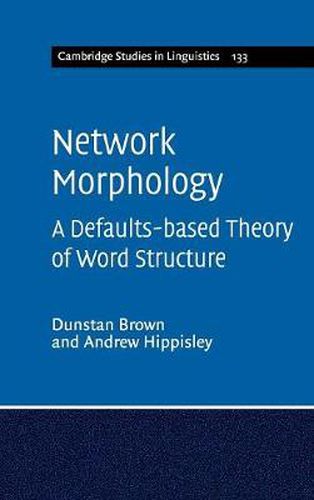Readings Newsletter
Become a Readings Member to make your shopping experience even easier.
Sign in or sign up for free!
You’re not far away from qualifying for FREE standard shipping within Australia
You’ve qualified for FREE standard shipping within Australia
The cart is loading…






Morphology is particularly challenging, because it is pervaded by irregularity and idiosyncrasy. This book is a study of word structure using a specific theoretical framework known as ‘Network Morphology’. It describes the systems of rules which determine the structure of words by construing irregularity as a matter of degree, using examples from a diverse range of languages and phenomena to illustrate. Many languages share common word building strategies and many diverge in interesting ways. These strategies can be understood by distinguishing different notions of ‘default’. The Network Morphology philosophy promotes the use of computational implementation to check theories. The accompanying website provides the computer coded version of the Network Morphology model of word structure for readers to test, customize and develop. This book will be a valuable contribution to the fields of linguistic typology and morphology and will be welcomed by researchers and graduate students in these areas.
$9.00 standard shipping within Australia
FREE standard shipping within Australia for orders over $100.00
Express & International shipping calculated at checkout
Morphology is particularly challenging, because it is pervaded by irregularity and idiosyncrasy. This book is a study of word structure using a specific theoretical framework known as ‘Network Morphology’. It describes the systems of rules which determine the structure of words by construing irregularity as a matter of degree, using examples from a diverse range of languages and phenomena to illustrate. Many languages share common word building strategies and many diverge in interesting ways. These strategies can be understood by distinguishing different notions of ‘default’. The Network Morphology philosophy promotes the use of computational implementation to check theories. The accompanying website provides the computer coded version of the Network Morphology model of word structure for readers to test, customize and develop. This book will be a valuable contribution to the fields of linguistic typology and morphology and will be welcomed by researchers and graduate students in these areas.